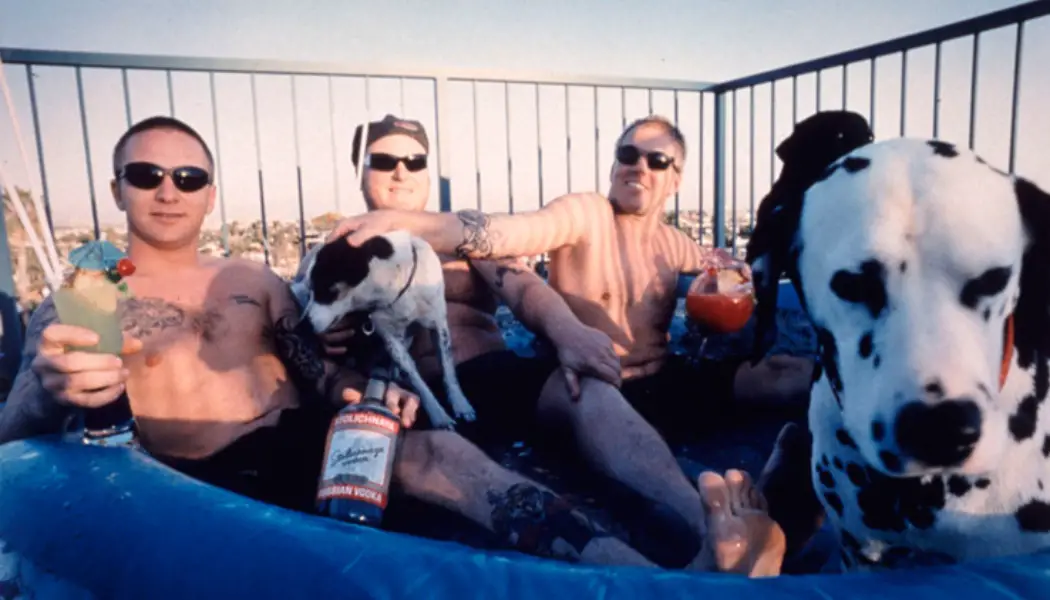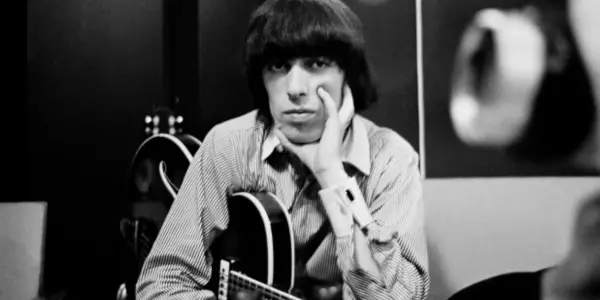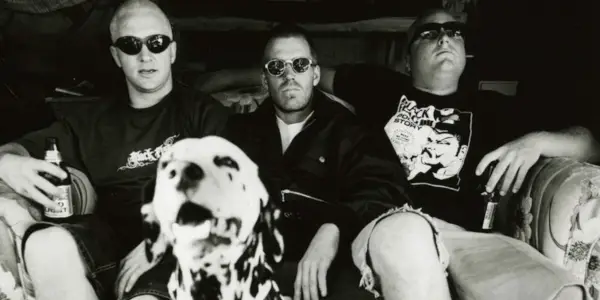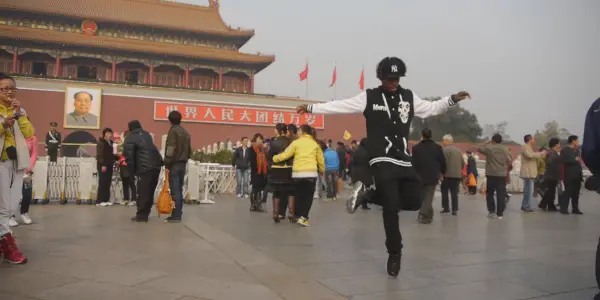Tribeca Film Festival 2019 Documentary Report #2

Stephanie Archer is 39 year old film fanatic living in…
Documentaries reigned supreme this year, taking over a majority of my screenings. While typically more drawn to narratives, there was something drawing me into the documentary category that I just could not shake, the caliber undeniable.
The Quiet One – Oliver Murray

I wasn’t really sure what to expect walking into my screening for The Quiet One. A life’s work of archiving and touring inspiring a documentary about a band’s bassist and his journey was intriguing and an interesting angle to shape a documentary. Now with the understanding that this too, through the eyes of the archiever would be a behind the scenes story of the founding and rise of The Rolling Stones through the eyes of its bassist Bill Wyman, I was definitely not sure what to expect, but I had to be there to see it.
One of the most notable elements of The Quite One was a peaceful calm that carried through the entire documentary, a breath of relief from a life well lived and documented. Someone who has been watching for years, opening his collection for the first time to the public and making himself vulnerable to the world outside. The film itself may have been about the history of The Rolling Stones and its bassist, yet it was also about the individual and the need of humanity to remember, to save, to cherish. There is footage and moments that are so personal, so raw, coupled with the retelling of the stories behind them, that you are engulfed, hypnotized by every moment until the film decides to let you go.
Here is a man whose entire life has been open to the public as the bassist for the Rolling Stones, yet here is this contrasting aspect of his life, a collection, and archival basement that was his own private piece of himself. The vulnerability and the journey to reach this point of wanting to share is the underlining story within The Quiet One. Yet, this vulnerability is contained, many times throughout the film, his back is facing the camera as it documents him currently working on his collection rather than the man himself.
The is one of the examples of the amazing framing and structure of The Quiet One, mirroring the subject’s personality and view of the world. He always felt as though the bassist was there in the background, and so too was he in life, capturing the journey and archiving the moments. Similarly, the entire documentary is mostly made up of footage, photos and imagery of his collection, with limited influence from the outside world and present day. Quietly creating this impeccable capsule of time, so too is this documentary of presenting it to the public for the first time.
Sublime – Bill Guttentag

Loving is what this Sublime documentary got. There was such a caressing of care in every moment, as the remaining band members, friends and family recall the rise of a legacy and the man behind it. While the title reads Sublime, this was more a documentary about Bradley Nowell than it was about the band, though with the understanding that Nowell was the band, the heart and soul, a part that would go unreplaced. There was a passion and once in a lifetime mind behind Nowell, a talent that is still sorely missed by those who knew him best.
When Tribeca had announced the entire lineup for the festival, I had originally missed this within the film’s growing lineup of music history content. Color me floored when I was making my schedule and I noticed the name Sublime in the documentary category. Shocked that I had missed this, I instantly reworked my entire schedule to make sure this film was included. And I wasn’t disappointed. While more a fan of No Doubt growing up, Sublime’s music has continued to interweave throughout my life, and having the opportunity to see the documentary was a real treat.
While many may know the story of Sublime and the tragic death of Bradley Nowell, hearing it from the band and friends who interject their aspects of the journey is a whole different experience. There is a vulnerability that comes from opening old wounds and welcoming the grief and loss to come rushing back. Though the band’s journey ended in tragedy, there were also plenty of good memories and laughs to go around. No Doubt recalled meeting the band for the first time, and many times after. The differences between them and the love they had for Nowell. Family members and teachers recalled his brilliance. His former wife and band member recalled the man behind the microphone – the man who lived for music.
It is a bit of a rollercoaster ride, mirroring the ups and down of Nowell’s addictions and the success and failures of the band in their earlier years, yet it is a ride fans need to be on. I thoroughly enjoyed this documentary, not just because it was a welcome screening following a series of heavy hitting documentaries before it, but because as a fan, it was a missing piece to the incredible journey Sublime has been on.
Lil’ Buck: Real Swan – Louis Wallecan

Inspirational. This is how I would describe Lil’ Buck: Real Swan. This is not a story of being in the right place at the right time, this is a story of a young man who wanted to dance. And wanted to dance more. Then wanted to dance better. And then wanted to be the best. Lil’ Buck may not have known where he wanted his dancing feet to take him, but he was willing to dedicate himself to the art and strive to constantly better himself.
Whats more, he did not cut himself off from opportunities because of the stigma it may carry. Beginning as a Joocker – which he attributes to keeping him out of a life of gangs, drugs and crime – Lil’ Buck wanted to raise his skill to stand with those he idolized, then to push further to be better. When he decided to learn to joock standing on the tips of his toes, he enrolled himself in ballet, working his way to learn point in order to transfer it to his sneakers. His passion and dedication inspired him to push even further, a push that would bring him to the opportunity of a lifetime – the chance to dance to the in-person accompaniment of Yo-Yo Ma. With the You Tube video surging to viral, more and more opportunities have opened up – which he has been unafraid to take.
There were some glaring issues with the documentary with regards to the more technical aspects. There was such a graceful and inspirational story unfolding on screen, yet I found the voiceovers, which carries through a majority of the film, to sometimes be distracting. I don’t know how many dance shows you watch, but there is not typically commentary. Would this voiceover have been more effective if you were not watching entire dance routines multiple times throughout the film – I think it might have. The voiceovers I felt needed to be less, more of a camera cut away to even the artist himself speaking might have given a better flow in and out of the conversations and information relayed while the dances occurred.
Calling back to the many almost full routine dance numbers throughout the film, a sharper and more creative editing might have elevated the film just a bit higher than where it currently stands. While in the beginning the dancing was edited in-between various Joockers and footage of the area Lil’ Buck grew up, it does not withstand this for very long, more drawn out scenes, with very few changes in camera angles – unfortunately some of the footage seemingly just camera phone footage. The problem this presents is the attention span the filmmaker is demanding from its audience. While the subject matter is enlightening, fascinating and inspiring, here is where Lil’ Buck runs the risk of losing its viewers.
Red, White and Wasted – Sam Jones & Andrei Bowden Schwartz

With all the documentaries I had the chance to see this year, I can say with complete honesty, my emotions have been on one insane rollercoaster. I have literally ugly cried, I have laughed, I have been inspired – with Red, White and Wasted I was frustrated, angry and understanding. This was a hard dcumentary to watch, not necessary because of what is on screen, but because I was not in aggreeance with a lot that was presented. Where there is a power of the documentary to show injustice and knowledge, so to does this power extend to different cultures – whether we agree with them or not. This is the most important aspect to remember when watching Red, White and Wasted – whether you agree with it or not.
Even if you don’t agree with the behaviors of a culture, it is a culture nonetheless. These are still idividuals raised to think, act and see the world as they do. You may not agree, but there can never be true communication or understanding if one does not know what that culture is. Here, viewers are given a look into the world of the mudders of Florida, ones who are typically associated with supporting Trump, rednecks, and racists. What starts off as a culture of monster truck owners living up the good time in Florida, running their jeeps through the muddy swamps, turns into something more devious and hard to stomach. What makes it harder to watch is the understanding of how each generation has been brought up, watching what those before them have done and carrying on the same behaviors.
As their mudholes are being drained, hotels erected in their place, these individuals are finding that not only is their leisure activities taken away, but also their livelihood. There is a empathy that erupts for the citizens on screen lamenting the past, the fondness of these memories they can only pass on to future generations through pictures and stories. As the film continues, we begin to see not the mudholes and grief, but the culture they live in. Abortion is wrong, drugs run rampant, abuse to women is commonplace and their means of coping have lead to mud runner events where trucks run during the day and depravity rules at night.
For me, the most difficult moment of the documentary came in two scenes. One, when one of the individuals casually comments on the modifications he has made to assault rifles that he can just sell at will (it would have been worth more if Hilary was elected) and the other, a showcase of the events that go down when the sun falls at one of these trucking events. My stomach churned at the raw footage, the strength of the camera to continue to capture, to stay a silent party, a witness.
If this documentary is looking to spark a conversation – on either side – it has definitely done it right. There are so many aspects that different people will cling to. They will be infuriated or agree. It opens up knowledge of a culture that many do not want to know, do not want to learn about. We would rather just blame them for electing our current president than understand where they are coming from, the upbringing. Red, White and Wasted may not have been my cup of tea, but it is a vital documentary in a time where our country is divided, each side yelling at the other, neither taking the time to actually step in the other’s shoes, to understand what is behind the way they live.
Does content like this matter to you?
Become a Member and support film journalism. Unlock access to all of Film Inquiry`s great articles. Join a community of like-minded readers who are passionate about cinema - get access to our private members Network, give back to independent filmmakers, and more.













